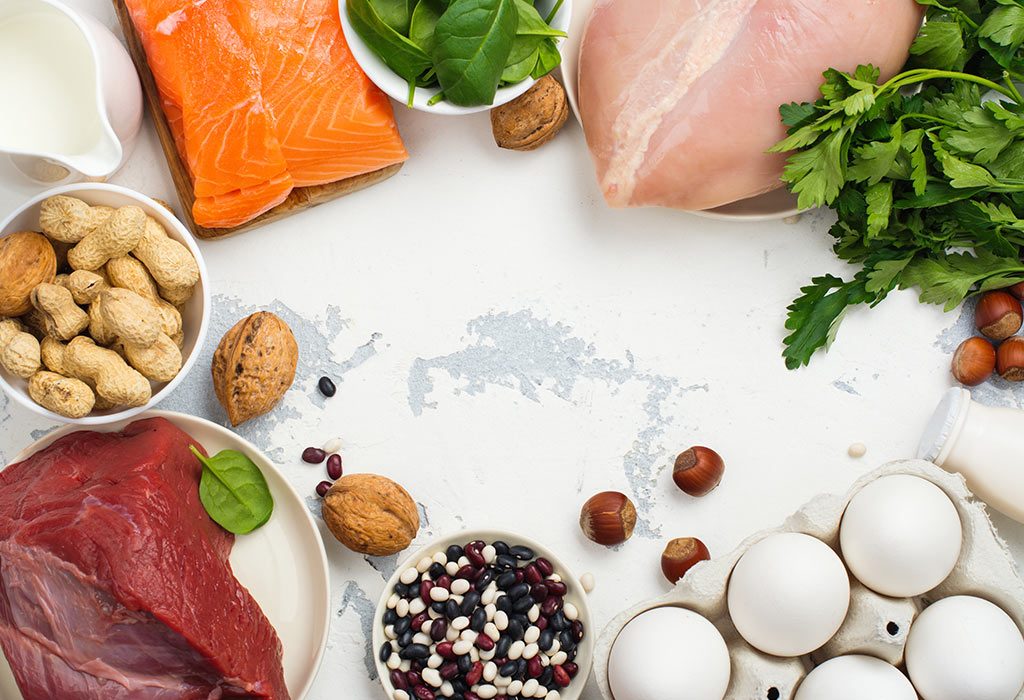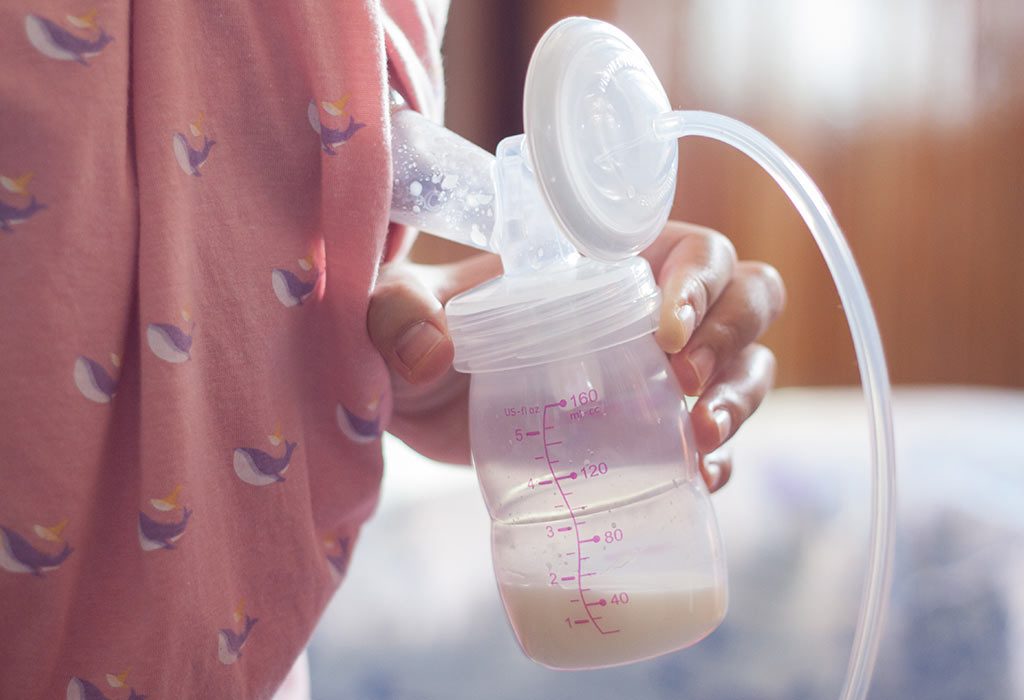In this Article
Breast milk consists of nutrients that are essential for your baby’s development in the first few months. However, the amount of fat in breast milk varies throughout the day. As fats are important for your baby, we’ll tell you how you can increase the fat content in the milk you produce.
Why Is Breast Milk Fat Important for Your Baby?
Breast milk is rich in fat content. In addition, it also has complex carbs, proteins, oligosaccharides, vitamins, and minerals which are absolutely essential for a growing baby. Further, colostrum, the watery yellow fluid produced by the breasts in the first few days after birth contains antibodies that strengthen the immune system of a newborn baby. It also supports the development and functioning of the baby’s gastrointestinal system.
What Is the Average Fat and Calorie Content in Breast Milk?
This table shows the average fat and calorie content in breast milk:
| Average Amount | Limits | |
| Calories | 75 calories per 100 mL | 50-120 calories per 100 mL |
| Fat | 4.2 grams per 100 mL | 2-5 grams per 100 mL |
| 4% fat | 2-10% fat |
What Are the Different Types of Fat Present in Breast Milk?
The fat content found in breastmilk can be classified into:
- Saturated fats
- Monounsaturated fats
- Polyunsaturated fats
- Omega-3 fatty acids
Factors That Affect Fat in Breast Milk
These factors influence the concentration of fat in breast milk:
1. Amount of Milk in the Breasts
An empty breast is richer in fat than a full breast. This is because when you start nursing, the foremilk is the first to emerge, and is rich in proteins, water and so on, but low in fat. However, the hindmilk, which comes later, is much richer in fats.
2. Frequency of Nursing Sessions
The fat content present in your breast milk is proportional to the number of times you feed your baby. This fact seems implausible, but it occurs because you are nursing your child faster than your breastmilk replenishes. This allows a higher portion of hindmilk to be retained in the breasts between feedings.
3. Time of the Day
The time of the day affects the fat concentration of the breast milk and it also depends on an individual. Some women have fuller breasts in the morning, while others have fuller breast during the afternoon or evening. Keep a note of your own experiences so you can judge when best to feed your baby.
4. Nutrition
Although this is a commonly-held belief, adding more fats to your diet does not alter the fat content in breast milk. In fact, this misconception has no basis whatsoever. Nevertheless, if your diet is rich in healthy fats, it can influence the type of fats present in your breastmilk.
Tips To Increase Fat in Breast Milk
Fat supports the development of the brain and nervous system. Here are some tips to increase the amount of fat in your breast milk:
1. Empty Your Breasts
New mothers often feel that they should nurse their baby with both breasts each time, which is not really necessary. As the baby suckles, the fats in the milk get stuck to each other and adhere to the alveolar walls of the milk ducts. As the milk enters the nipples, the fatty hindmilk is left behind while the foremilk comes out. If at this point, you switch your baby to the other breast, he will only have consumed the foremilk from the first breast. And by the time the hindmilk of the second breast is reaching the nipples, your baby will be too full to drink anymore. The best solution, in this case, is to allow your baby to empty a single breast until he is completely sated. If he is still hungry or demands more, you can give him the other breast.
2. Massage Them
Breast massages and breast compressions improve the flow of breast milk through the milk ducts. You can do this is by holding your breast and squeezing it gently. With these compressions, the fatty portions of the milk move towards the nipples. This method is only successful if your baby continues to suckle during the process because this means that milk has been released.
3. Eat Protein-Rich Foods
Although breast milk is naturally rich in protein, adding more protein to your meals can increase the fat content in breast milk. This is because protein helps in the synthesis of breast milk, and therefore an increase in dietary fat for your newborn. (please verify) The best sources of protein are eggs, nuts, milk, chicken, cheese, fish, etc. If you’re vegetarian or vegan, you can ask your lactation specialist for a protein supplement.

4. Increase the Frequency of Feeding Sessions
The often you nurse, the more the fat-rich hindmilk will flow at the beginning of the session. This is because the hindmilk is in the front due to frequent breastfeeding.
5. Pump Your Breast Milk Out
Using a breast pump can increase the fat content in your breast milk. Pumping helps you empty your breasts of foremilk so your infant feeds on the hindmilk. However, foremilk is essential for your baby’s growth and development, too.

6. Consume Supplements
Natural health supplements are also believed to be effective when it comes to increasing the fat content of breast milk. A popular one is sunflower lecithin, which is mostly used by women who have blocked ducts. Sunflower lecithin is believed to reduce the viscosity of the fats in breast milk, allowing it to flow better. This also allows hindmilk to emerge at the beginning of the nursing session.
These eight tips are quite effective when it comes to increasing the fat content in your breast milk. As explained, the importance of fat in your baby’s diet cannot be understated. Finally, please remember that most of the fat in breast milk appears when the breasts are almost empty, so always let your newborn suckle on one breast until it is completely empty before switching.









